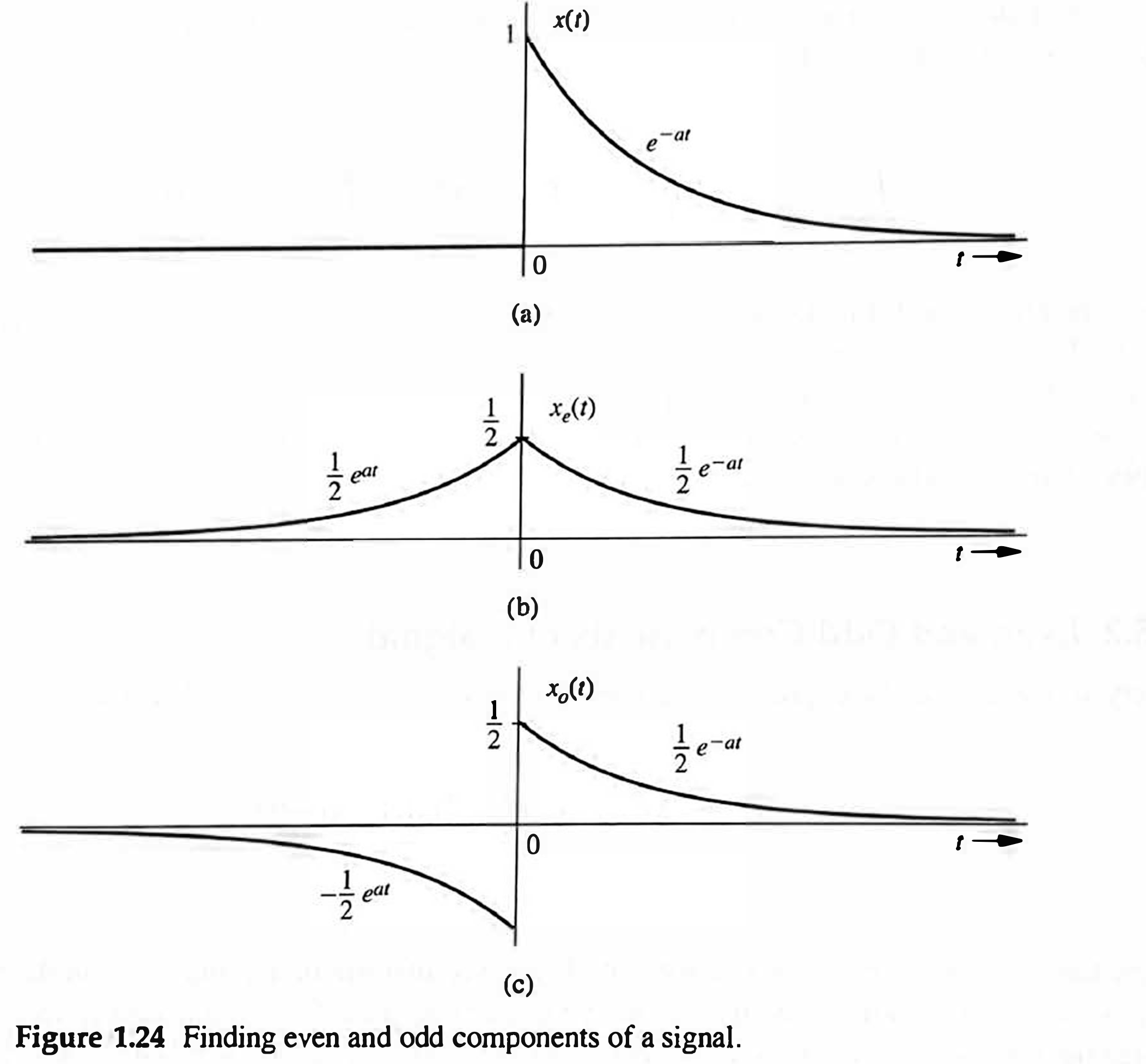Even and Odd Functions
Sources:
- B. P. Lathi & Roger Green. (2021). Chapter 1: Signals and Systems. Signal Processing and Linear Systems (2nd ed., pp. 64-136). Oxford University Press.
Even and odd functions
A function
A function
Mathematically expressed, these symmetry conditions require
where e stands for even, o stands for odd.
An even function has the same value at the instants
Even and odd components of a signal
Every signal
From the definitions in
Finding the even and odd components of a signal
Given a signal
The function

A Modification for complex signals
While a complex signal can be decomposed into even and odd components, it is more common to decompose complex signals using conjugate symmetries.
- A complex signal
- A conjugate-symmetric signal is even in the real part and odd in the imaginary part. Thus, a real conjugate-symmetric signal is an even signal.
- A signal is conjugate-antisymmetric if
- A conjugate-antisymmetric signal is odd in the real part and even in the imaginary part. A real conjugate-antisymmetric signal is an odd signal.
Any signal
The proof is similar to the one for decomposing a signal into even and odd components. As we shall see in later chapters, conjugate symmetries commonly occur in real-world signals and their transforms.